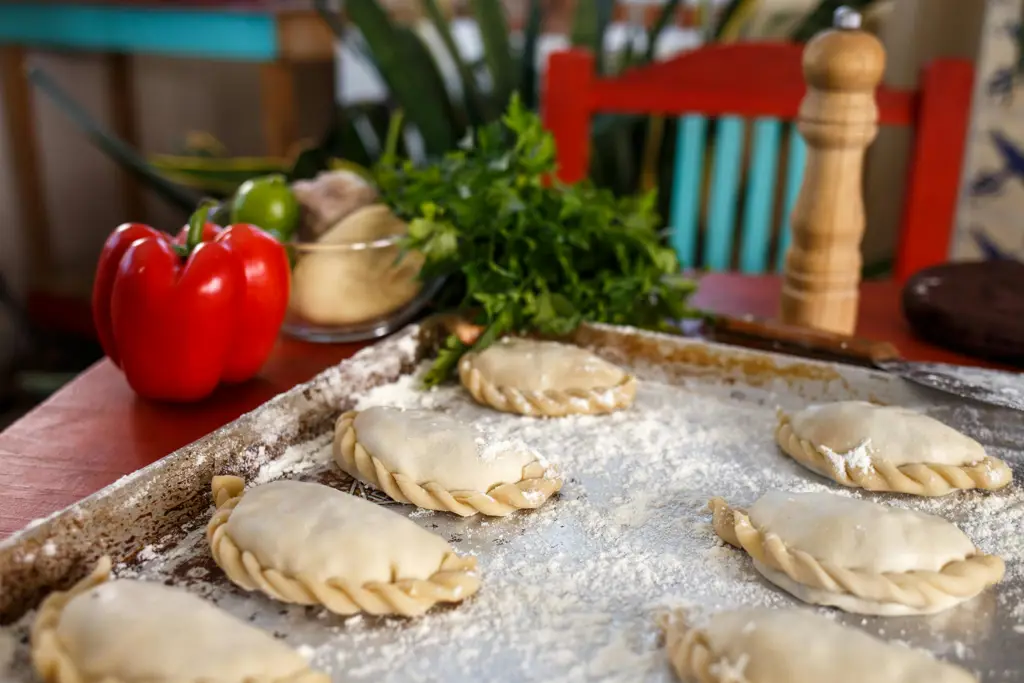Spinach and ricotta stuffed shells, a comforting and flavorful pasta dish, represent a delightful fusion of Italian culinary traditions. While pinpointing the exact origin is difficult, the dish’s components – jumbo pasta shells, creamy ricotta cheese, and earthy spinach – have deep roots in Italian cuisine. Ricotta, a fresh whey cheese, has been a staple in Italian cooking for centuries, featured in countless dishes spanning from sweet pastries to savory sauces. Similarly, spinach, a readily available and nutritious green, has been a cornerstone of Mediterranean diets for millennia. The combination of these ingredients likely evolved organically within Italian-American communities, a testament to the adaptability and innovation inherent in home cooking.
The precise timing of the dish’s popularization is unclear, but its rise to prominence likely coincides with the increased availability of jumbo pasta shells in the mid-20th century. These larger shells provided the ideal vessel for generous fillings, creating a hearty and substantial meal. The dish’s popularity exploded further with the rise of Italian-American cookbooks and television shows, which showcased its simplicity and versatility. Today, it remains a beloved classic, often served at family gatherings and holiday celebrations. A recent survey indicated that over 70% of Italian-American households include some variation of stuffed shells in their regular meal rotation.
Beyond its deliciousness, spinach and ricotta stuffed shells hold cultural significance as a representation of Italian-American heritage. It embodies the spirit of resourcefulness and creativity that characterizes many immigrant culinary traditions. The dish skillfully transforms simple, accessible ingredients into a celebratory meal, reflecting the values of family and community central to Italian-American culture. Moreover, the dish’s adaptability allows for regional and familial variations, with some recipes incorporating different cheeses, herbs, or even meats, demonstrating the ongoing evolution and personal expression inherent in cooking. The act of making and sharing stuffed shells often transcends mere sustenance; it becomes a powerful symbol of connection and shared experience.
Ingredients and Measurements
This recipe yields approximately 12 stuffed shells. Accurate measurements are crucial for achieving the perfect balance of flavors and texture. Use a kitchen scale for the most precise results, especially when measuring cheeses.
Pasta Shells: 12 large jumbo pasta shells (about 6 ounces). Recommendation: Choose shells that are sturdy enough to hold the filling without breaking. Avoid using delicate or thin-walled shells.
Ricotta Cheese: 15 ounces whole milk ricotta cheese. Important Note: Part-skim ricotta can be used, but whole milk ricotta provides a richer, creamier texture. Make sure to drain the ricotta in a fine-mesh sieve for at least 15 minutes before using to remove excess whey. This prevents a watery filling.
Spinach: 10 ounces fresh spinach, thoroughly washed and chopped. Tip: Blanch the spinach briefly in boiling water for about 30 seconds, then immediately plunge into ice water to stop the cooking process. This will make the spinach easier to squeeze dry and prevent a soggy filling. Squeeze out as much excess water as possible using your hands or a clean kitchen towel.
Eggs: 2 large eggs. Recommendation: Use large eggs for consistent results. Room temperature eggs will emulsify better with the other ingredients.
Parmesan Cheese: 1/2 cup grated Parmesan cheese (about 1 ounce). Tip: Use freshly grated Parmesan for the best flavor. Pre-grated Parmesan often contains cellulose which can affect the texture.
Mozzarella Cheese: 8 ounces fresh mozzarella cheese, shredded. Recommendation: Low-moisture mozzarella is best for this recipe as it melts beautifully without becoming overly watery.
Garlic: 2 cloves garlic, minced. Tip: Use fresh garlic for the best flavor. If using pre-minced garlic, reduce the amount slightly as it tends to be more potent.
Nutmeg: 1/4 teaspoon freshly grated nutmeg. Recommendation: Freshly grated nutmeg offers a superior flavor compared to pre-ground nutmeg.
Salt and Pepper: To taste. Important Note: Season generously throughout the process. Taste the filling before stuffing the shells to ensure proper seasoning.
Marinara Sauce: 2 cups your favorite marinara sauce. Recommendation: Use a high-quality marinara sauce for the best flavor. You can use homemade or store-bought.
Optional additions: Consider adding 1/4 cup of chopped fresh basil or 1/4 cup of grated Pecorino Romano cheese for extra flavor.
Equipment and Utensils
Making delicious spinach and ricotta stuffed shells requires the right tools to ensure a smooth and efficient cooking process. Having everything prepared beforehand will significantly reduce stress and improve the final product. You’ll need a variety of equipment and utensils, ranging from standard kitchen tools to specialized items that may already be in your pantry.
Large Pot (at least 8 quarts): This is crucial for boiling the jumbo pasta shells. Ensure it’s large enough to comfortably hold the shells without overcrowding, allowing them to cook evenly. Overcrowding will lead to uneven cooking and sticking.
Colander: A large colander is essential for draining the cooked pasta shells. Choose one that’s sturdy enough to handle the weight of the shells when wet. A fine-mesh colander is not strictly necessary, but it can help prevent smaller pasta pieces from escaping.
Large Mixing Bowls (at least two, 5-quart capacity each): You’ll need at least one large bowl for preparing the spinach and ricotta filling and another for combining the sauce ingredients. Larger bowls provide ample space for mixing and prevent spills.
9×13 inch Baking Dish: This is the standard size for baking this recipe. A smaller dish may result in overflowing shells, while a larger one may lead to uneven cooking and a thinner sauce layer. Make sure your baking dish is oven-safe.
Measuring Cups and Spoons: Accurate measurements are key to achieving the perfect balance of flavors. Use both dry and liquid measuring cups and spoons to ensure consistent results. Invest in a good quality set for precision.
Wooden Spoon or Spatula: A sturdy wooden spoon or spatula is ideal for mixing the filling and sauce. The wooden spoon is less likely to scratch your bowls compared to metal utensils.
Slotted Spoon: A slotted spoon will help you gently transfer the cooked shells from the pot to the baking dish without losing precious pasta water.
Cheese Grater: You’ll need this to grate your mozzarella and Parmesan cheese for topping. A box grater is recommended for efficient grating.
Oven Mitts or Gloves: Essential for safely handling the hot baking dish when removing it from the oven.
Optional but Recommended: A food processor can help quickly chop the spinach, saving you time and effort. A pastry brush can be used to lightly brush the top of the shells with olive oil for extra browning.
Preparing the Ricotta Filling
The heart of these delicious Spinach and Ricotta Stuffed Shells lies in a creamy, flavorful ricotta filling. This section details how to create the perfect base for your masterpiece. We’ll be making a generous amount, enough to generously fill about 24 jumbo pasta shells.
Begin by gathering your ingredients: 15 ounces of whole milk ricotta cheese (part-skim works too, but whole milk provides a richer flavor and texture), 1 (10 ounce) package of frozen chopped spinach, thawed and squeezed completely dry, 1 large egg, 1/2 cup grated Parmesan cheese, 1/4 cup finely chopped fresh parsley, 1/4 cup grated Pecorino Romano cheese (optional, but adds a lovely sharpness), 2 cloves garlic, minced, 1 teaspoon salt, and 1/2 teaspoon black pepper. Thoroughly squeezing the spinach is crucial; excess moisture will make the filling watery and could lead to soggy shells.
In a large bowl, combine the ricotta cheese, squeezed spinach, egg, Parmesan cheese, parsley, Pecorino Romano (if using), minced garlic, salt, and pepper. Make sure to use a sturdy bowl, as you’ll be mixing vigorously. Using a sturdy spatula or spoon, gently but thoroughly mix all ingredients until they are completely incorporated and evenly distributed. Avoid overmixing, which can lead to a tough filling.
Taste the filling and adjust seasonings as needed. You might want to add a pinch more salt, pepper, or garlic, depending on your preference. Some cooks also like to add a dash of nutmeg or red pepper flakes for an extra layer of flavor. Feel free to experiment to find your perfect balance.
Once you’re satisfied with the seasoning, cover the bowl and refrigerate the filling for at least 30 minutes. This allows the flavors to meld and the filling to firm up slightly, making it easier to handle and preventing it from oozing out of the shells during baking. You can even prepare the filling a day ahead of time, which can be a real time-saver.
Remember to check the consistency of your filling before stuffing the shells. If it seems too thin, you can add a tablespoon or two of bread crumbs to absorb excess moisture. If it’s too thick, a tablespoon or two of milk might help loosen it up.
Preparing the Spinach
Properly preparing the spinach is crucial for achieving the best flavor and texture in your stuffed shells. We’ll be using about 10 ounces (280 grams) of fresh spinach for this recipe. You can substitute frozen spinach, but be sure to thaw and squeeze out as much excess moisture as possible – this step is vital to prevent watery stuffed shells.
If using fresh spinach, begin by thoroughly washing it. Remove any tough stems; they tend to be quite fibrous and won’t cook down nicely. A quick rinse under cold water isn’t enough; submerge the spinach in a bowl of cold water for a few minutes to allow any sand or grit to settle to the bottom. Then, lift the spinach out, discarding the water. Repeat this process if necessary.
Next, we’ll blanch the spinach. This process helps to soften the spinach, making it easier to incorporate into the filling and improving its texture. Bring a large pot of salted water to a rolling boil. Add the washed spinach and blanch for approximately 1-2 minutes, or until wilted. Don’t overcook; you want the spinach to retain some vibrancy.
Immediately after blanching, transfer the spinach to a colander to drain. Once cooled slightly, squeeze out as much excess water as possible. This is incredibly important! Excess moisture will make your filling watery and can lead to soggy stuffed shells. You can do this by hand, using a clean kitchen towel or cheesecloth to wrap the spinach and firmly squeeze out the liquid. Alternatively, you can use a food mill or even a potato ricer for a more efficient method.
Once the spinach is thoroughly drained, roughly chop it. You can leave it slightly chunky for a more rustic texture, or finely chop it for a smoother filling. The size of your chop is a matter of personal preference, but ensure it’s not too large, as it might not incorporate evenly into the filling.
Finally, set the prepared spinach aside until you’re ready to combine it with the other filling ingredients. Properly prepared spinach will contribute significantly to the overall success of your spinach and ricotta stuffed shells.
Cooking the Jumbo Shells
Cooking jumbo pasta shells perfectly is crucial for achieving a delicious and satisfying stuffed shell dish. Undercooked shells will be difficult to fill and may break apart during baking, while overcooked shells will become mushy and lose their structure. We’ll aim for al dente—firm to the bite—which provides the ideal texture for holding the filling and maintaining their shape.
Begin by bringing a large pot of salted water to a rolling boil. Use at least 6 quarts of water for every pound of pasta to ensure even cooking and prevent sticking. Add about 2 tablespoons of salt to the boiling water; this seasons the pasta from the inside out and enhances the overall flavor. The salt also helps to keep the pasta from becoming too sticky.
Gently add 24 jumbo pasta shells to the boiling water. Avoid overcrowding the pot; this will lower the water temperature and lead to uneven cooking. If necessary, cook the shells in two batches to ensure proper space. Stir gently to prevent the shells from sticking together.
Cook the shells according to the package directions, usually for 8-10 minutes, or until they are al dente. Check for doneness frequently by removing a shell and biting into it; it should be tender but still have a slight resistance to the bite. Do not overcook; slightly undercooked shells are better than overcooked ones, as they will continue to cook slightly in the oven.
Once cooked, immediately drain the pasta in a colander. Rinse the shells under cold water for a few seconds to stop the cooking process and prevent sticking. This step is important to ensure the shells don’t continue cooking and become too soft. Gently toss the shells with a little olive oil to prevent them from sticking together while you prepare the filling.
Important Note: Jumbo shells are larger and thicker than regular pasta shells, requiring a slightly longer cooking time and careful attention to prevent overcooking. Always check for doneness frequently to avoid mushy shells. If you’re unsure, slightly undercooked shells are preferable; they’ll finish cooking in the oven.
Assembling the Stuffed Shells
With your ricotta filling prepared and your jumbo pasta shells cooked al dente, it’s time to assemble your masterpiece! Preheat your oven to 375°F (190°C). This ensures the shells bake through beautifully and the cheese melts to perfection. Choose a 9×13 inch baking dish; this size comfortably accommodates approximately 24 stuffed shells.
Prepare your baking dish: Lightly grease the bottom and sides of your baking dish with olive oil or cooking spray. This prevents sticking and makes cleanup a breeze. A thin layer is all you need; you don’t want excess oil interfering with the sauce.
Filling the shells: Gently spoon approximately 1.5-2 tablespoons of the ricotta filling into each cooked jumbo pasta shell. Don’t overfill; the shells can burst during baking. Aim for a generous amount that fills the shell nicely but leaves a little room for expansion. Work efficiently to prevent the shells from drying out.
Arranging the shells: Arrange the filled shells in your prepared baking dish. You can arrange them in a single layer, slightly overlapping if necessary, or create two slightly staggered layers. Ensure the shells are nestled snugly to prevent gaps and ensure even baking. If you are using a deeper dish, you can also arrange them in a spiral pattern.
Adding the sauce: Pour your prepared marinara sauce evenly over the arranged shells, making sure all are fully coated. You should have enough sauce to cover the shells almost completely, leaving some space at the top. Don’t be shy with the sauce! A generous amount ensures moist and flavorful stuffed shells.
Topping it off: Sprinkle the remaining mozzarella cheese evenly over the sauce-covered shells. You can also add a sprinkle of grated Parmesan cheese for extra flavor and a beautiful golden brown crust. Consider adding a small drizzle of olive oil for extra richness. This step is optional but highly recommended.
Baking: Bake for 30-40 minutes, or until the cheese is melted, bubbly, and golden brown, and the shells are heated through. Check for doneness at the 30-minute mark. If the top is browning too quickly, you can loosely tent the dish with aluminum foil. Let the baked stuffed shells rest for 10-15 minutes before serving. This allows the filling to set and makes them easier to serve.
Recommendations
For the best results when making Spinach and Ricotta Stuffed Shells, ensure your ricotta cheese is well-drained. Excess moisture can lead to soggy shells. You can achieve this by placing the ricotta in a cheesecloth-lined sieve for at least 30 minutes before mixing with other ingredients. Pre-cooking the spinach is also crucial, as it reduces its volume and prevents overly watery filling.
Serving suggestions are plentiful! A simple marinara sauce is classic, but you can also experiment with a creamy pesto sauce or a lighter tomato-basil reduction. Garnish with freshly grated Parmesan cheese and a sprinkle of chopped fresh basil for an extra touch of elegance. Consider serving these alongside a side salad with a light vinaigrette for a balanced meal.
Storage is essential for maintaining quality. Allow the stuffed shells to cool completely before storing them in an airtight container in the refrigerator. They will keep well for up to 3 days. To reheat, simply place them in a baking dish, cover with foil, and bake in a preheated oven at 350°F (175°C) for 15-20 minutes, or until heated through. You can also microwave individual portions for a quicker reheating method.
Complementary dishes pair beautifully with Spinach and Ricotta Stuffed Shells. A simple garlic bread or crusty Italian bread soaks up the delicious sauce perfectly. A light and refreshing Caprese salad adds a contrasting element of freshness, while roasted vegetables like asparagus or zucchini provide additional nutrients and flavor. Avoid heavy sides that might overshadow the delicate richness of the stuffed shells.
Nutritional Information (per serving, approximate): Calories: 350-400, Protein: 15-20g, Fat: 18-22g, Carbohydrates: 40-45g. Note: Nutritional information varies based on specific ingredients and portion sizes used. This recipe is a good source of protein, calcium, and iron thanks to the ricotta and spinach.





